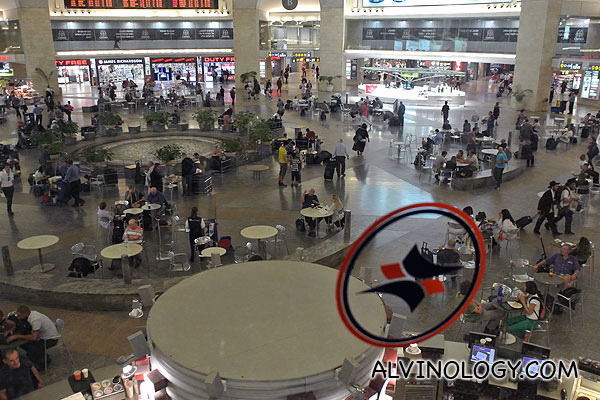Back in September, I went on a trip to Israel, hosted by a team of students from Bar Ilan University in Israel, under their Dig Israel project.
More about the Dig Israel project via their official website:
Since time immemorial, the land of Israel has been a center for diverse cultures and historical events that have affected all of mankind. A place where all three monotheistic faiths hold sacred; where nations have risen and fallen; where past and present merge into a fascinating existence.
Thanks to its breathtaking landscape and multicultural scenes, Israel offers an unforgettable, unique archaeological experience, offering the opportunity to visit world known sites and newly discovered excavations.
Israel, a land of rich and mystifying history, and a beacon of fascinating Archaeology stretching it full span. A wide lensed spectrum of relics are being discovered and uncovered constantly telling so many tales of mankind and it’s journey in the middle-east.
Our vision is to have some of the exclusive and unique historical findings introduced and shared with the world as a public treasure for all to appreciate.
DigIsrael offers a unique five day tour of some of Israel’s most fascinating, prominent and exclusive antiquities. This tour is a “journey through time” in the Land of Israel, a crossroad of civilizations throughout history for the aforementioned audience of influential writers.
In addition, participants will meet with researchers in the field, partaking in local cultural activities and ongoing excavations. This tour will have a focus on revealing the rich history of the land.
Archaeology depicts a story – a narrative – that enhances our understanding of the past. DigIsrael will share these stories.
Pretty cool isn’t it?
I had always wanted to visit Israel after hearing so many positive stories from fellow travel blogger, Eunice. When I was contacted by Matan from the Dig Israel team on the possibility of joining them for this trip, I immediately agreed.
Visiting a country rich in heritage and history while learning and experiencing archaeology at the same time – count me in! I was honoured to be the only blogger from Asia in the team, with the rest of the bloggers coming from America and Europe.
Throughout the 5D4N Israel archaeological trip, friendship was forged with both the students and the bloggers. I also get a glimpse of the real Israel, beyond the usual media stereotypes.
A lot of Singaporeans have the perception that Israel is a dangerous country and that you will be barred from entering Muslim countries after visiting. These are misconceptions and you can find out more on how you can prepare yourself for a trip to Israel via my previous blog post whereby I shared some travel tips.
I missed the welcome dinner on the first day as I flew in from Hong Kong to Israel on a noon flight and only reached Tel Aviv past midnight. I was on a family vacation in Hong Kong Disneyland with my family before that and I really appreciate the Dig Israelteam, especially Matan, for helping to make flight and transport arrangement to fit my schedule.

When I arrived at Ben Gurion International Airport, a friendly young man from the Dig Israel team, Ohad, was holding a sign with my name on it, just outside custom. Ohad works as an engineer and actually has to report for work early in the morning the next day. Nonetheless, he had volunteered to drive me from the airport to my hotel. Nice guy! We had a good chat during the short half an hour drive.
The team has kindly arranged for us to stay at Herods Hotel for our first night in Tel Aviv – a really nice hotel facing the waterfront.
Once checked in, I took a quick shower and went to bed, looking forward to the start of the Dig Israel travel itinerary the next day.




In the morning, I was introduced to Israeli food by the sumptuous breakfast spread at the hotel restaurant.
The breakfast buffet spread features many kinds of cheeses, freshly baked breads, yoghurts and fruits. Stuff I like. I can get used to eating these everyday.





During breakfast, I met some of the other bloggers like Rob from Canada and Ilona from Hungary who were the first to come up and greet me. Super friendly folks!
After breakfast, I was introduced to our guide, Michael (who looks a lot like Gerald Butler in Spartan) and met up with the rest of the Dig Israel team.
Our first stop was the ancient city of Jaffa; a southern, oldest part of Tel Aviv – Jaffa municipality (since 1950), an ancient port city (closed as a port in 1965). Jaffa is famous for its association with the biblical story of the prophet Jonah, an important character in biblical text.
Modern Jaffa has a heterogeneous population of Jews, Christians, and Muslims. Jaffa currently has 46,000 residents, of whom 16,000 are Arab citizens of Israel and 30,000 are Jews.
From the 1990s onwards, efforts have been made to restore Arab and Islamic landmarks, such as the Mosque of the Sea and Hassan Bek Mosque, and document the history of Jaffa’s Arab population.
Parts of the Old City which we visited have been renovated, turning Jaffa into a tourist attraction featuring old restored buildings, art galleries, theaters, souvenir shops, restaurants, sidewalk cafes and promenades. The municipality of Tel Aviv-Jaffa is currently working to beautify and modernize the port area.





























After our induction to Israeli history, it was time for a little shopping in the Jaffa flea market area:













From Jaffa, we took a long bus ride to Caesarea, a town in Israel located mid-way between Tel Aviv and Haifa (45 km), on the Israeli coastal plain near the city of Hadera. The town was built by Herod the Great about 25–13 BC as the port city Caesarea Maritima.
Caesarea Maritima is now a national park and is a popular location for the summer period, having a developed promenade with restaurants and coffee shops.
Archaeological excavations in the 1950s and 1960s uncovered remains from many periods, in particular, a complex of Crusader fortifications and a Roman theatre which we visited.
Excavation works are still ongoing at Caesarea, governed by the Israel Antiquity Authority.
Via wikipedia – Caesarea has recently become the site of what bills itself as the world’s first underwater museum, where 36 points of interest on four marked underwater trails through the ancient harbor can be explored by divers equipped with waterproof maps. I did not see this during my trip, but it sounds exciting and worth exploring if I visit Israel again.



















































After Caesarea, we moved on to visit Beit She’arim, the archeological site of a Jewish town and a large number of ancient rock-cut Jewish tombs. Stay tuned for my next update.
For all my posts on Dig Israel, CLICK HERE.











Thank you Alvinology for the travel commentaries. I have no chance of travelling myself, but your blog commentaries are real and superb.